Abstract
Pulse oximeter (SaO2P) measurements were compared with direct arterial line oxygen saturation (SaO2) from co-oximeters in 92 instances in 43 patients, and with arterial line oxygen measurements (PaO2) in 169 instances in 81 patients. The mean (SD) absolute difference between SaO2P and SaO2 was 2.6% (2.4) after attempt to correct for the co-oximeter falsely measuring a proportion of fetal haemoglobin as carboxy haemoglobin. For 19 infants and children greater than or equal to 5 months old, who have very little fetal haemoglobin, the mean (SD) absolute difference of 27 comparisons was 1.8% (2.1). Comparison of SaO2P and PaO2 measurements in 46 instances when PaO2 was less than 6.67 kPa showed SaO2 to be less than 90% on 40 occasions. In 24 instances when PaO2 was greater than or equal to 13.3 kPa the SaO2P was greater than or equal to 98% on 22 occasions. In 23 infants undergoing neonatal intensive care, transcutaneous oxygen monitors were compared with arterial PO2 measurements in 60 instances. The mean (SD) absolute difference between PaO2 and transcutaneous oxygen measurements was 1.60 kPa (1.73). Ten of the 60 comparisons had differences greater than 2.67 kPa and three greater than 5.33 kPa (maximum 8.40 kPa). Pulse oximetry is a clinically useful technique for managing oxygenation but further studies are needed to confirm its safety in premature infants at risk of retinopathy of prematurity.
Full text
PDF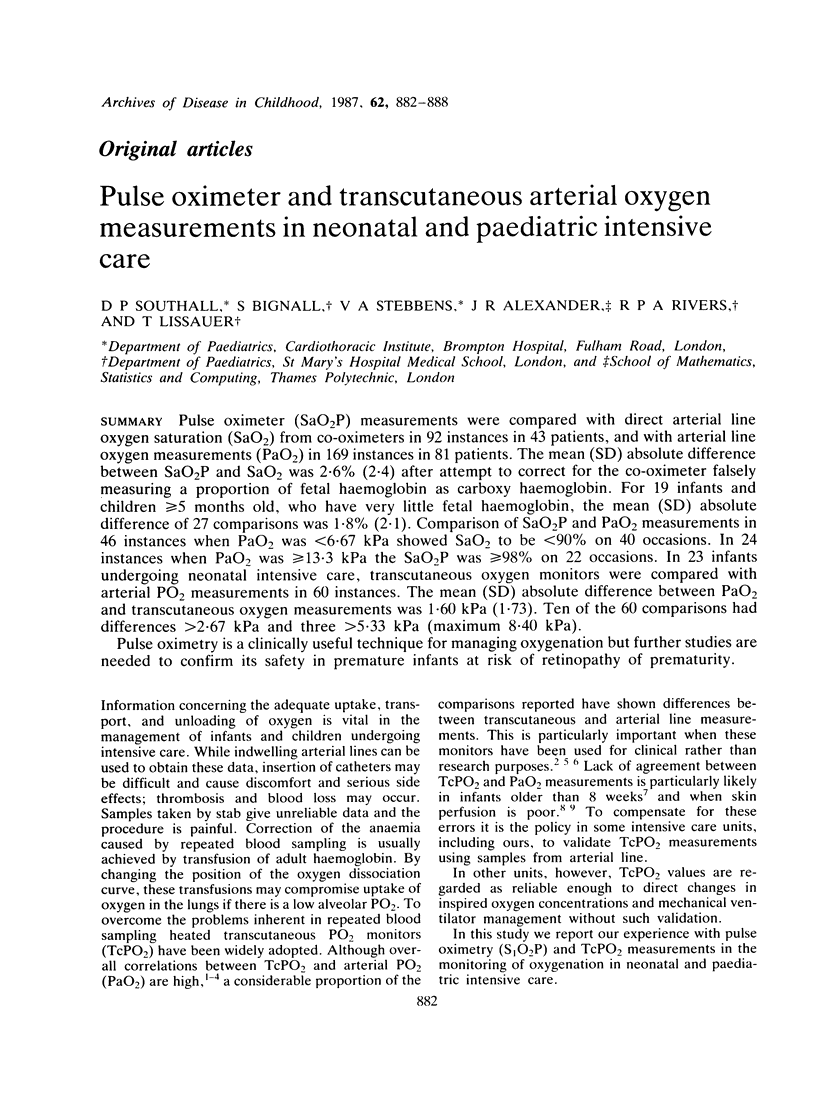

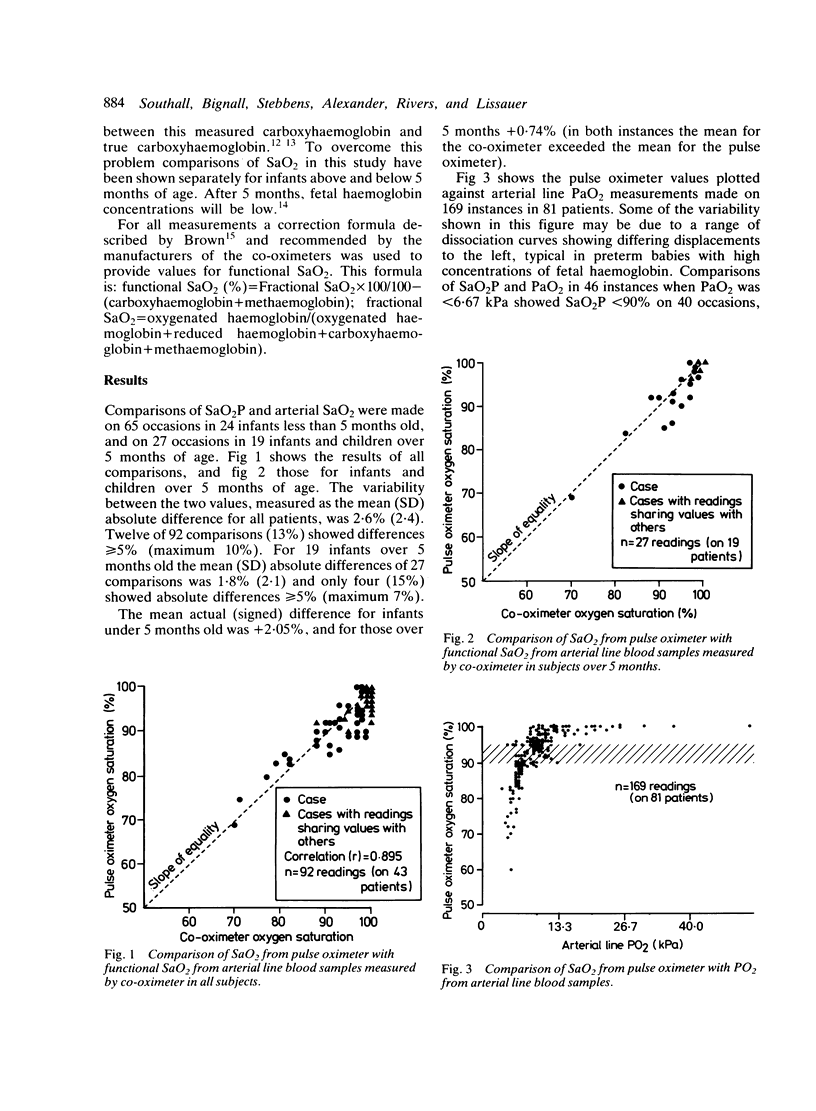
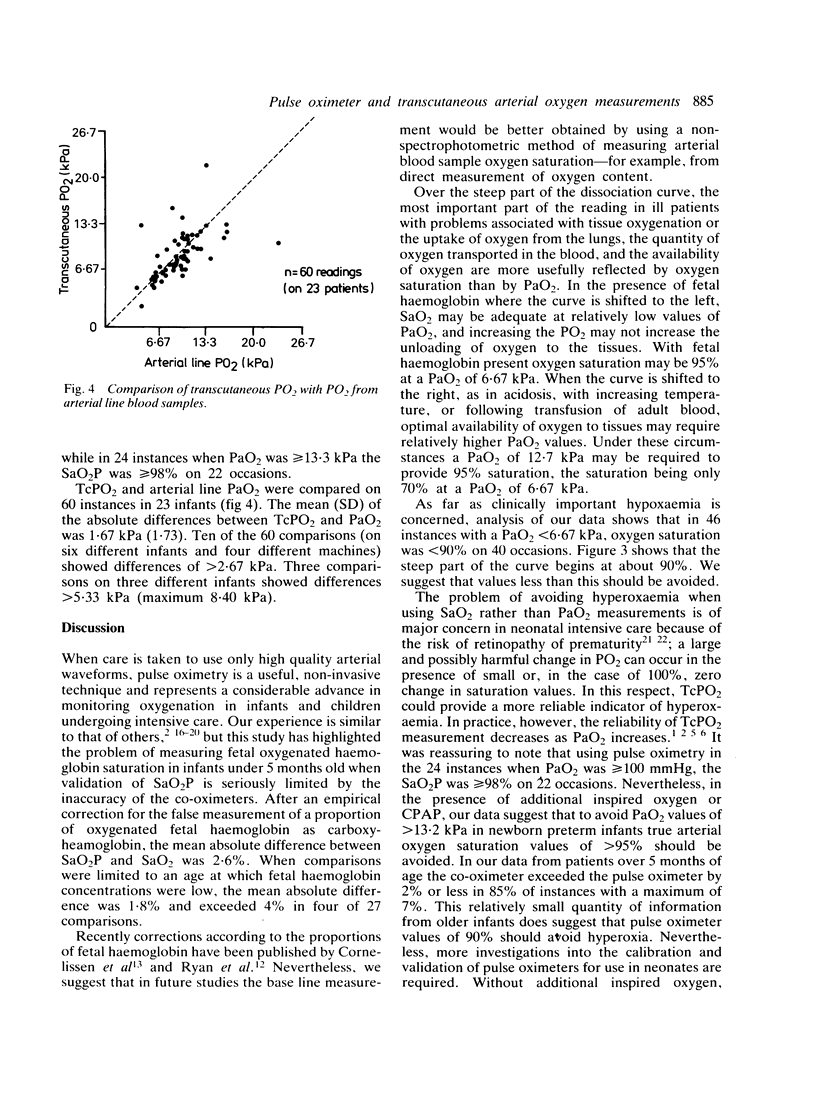
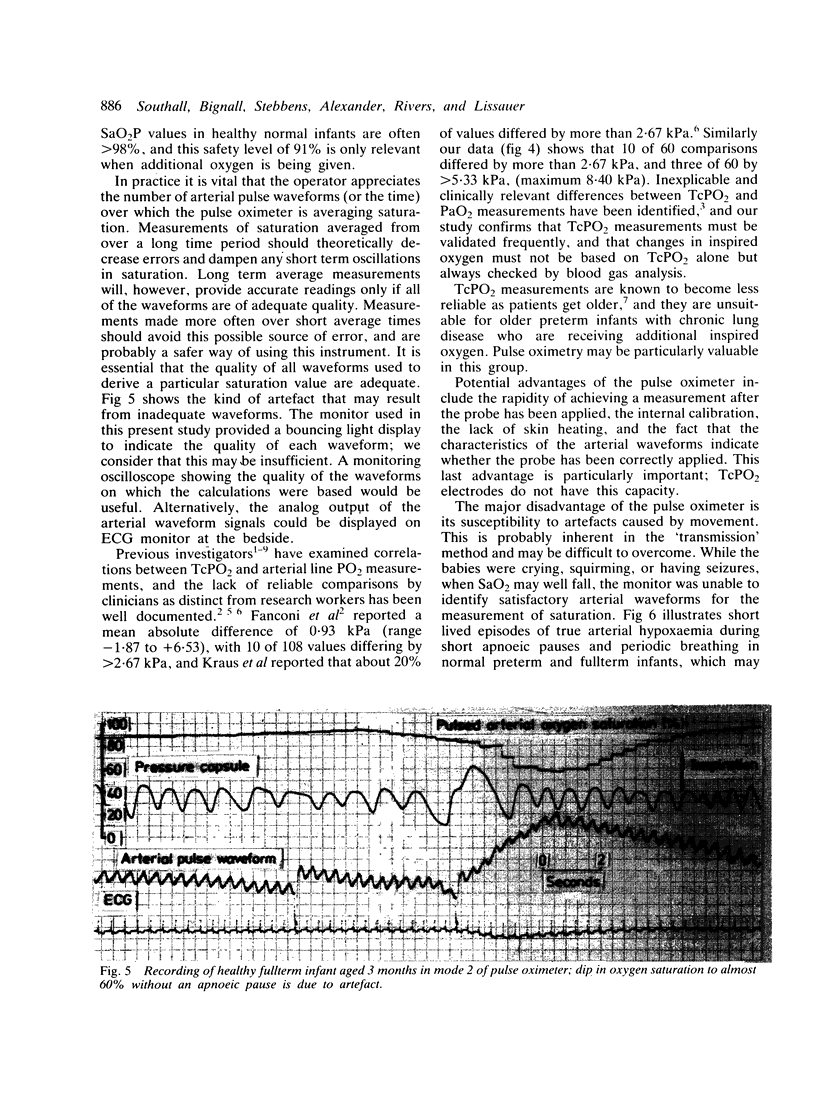
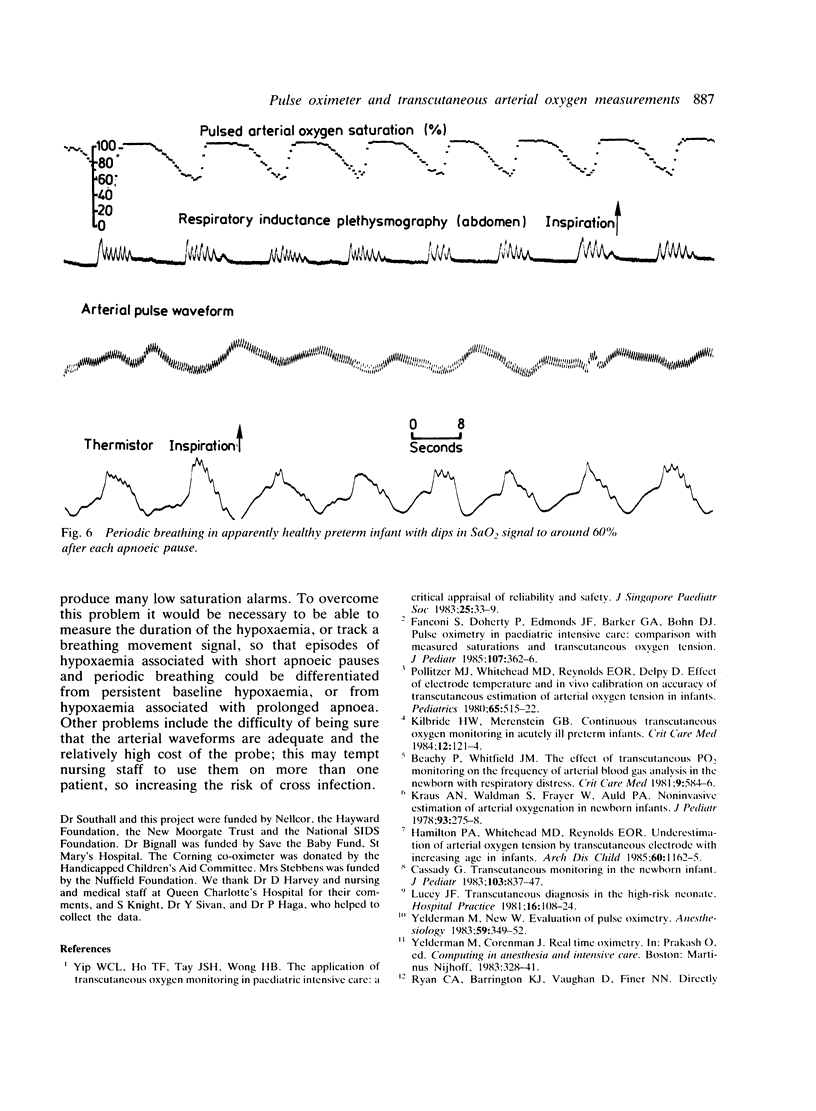

Selected References
These references are in PubMed. This may not be the complete list of references from this article.
- Beachy P., Whitfield J. M. The effect of transcutaneous Po2 monitoring on the frequency of arterial blood gas analysis in the newborn with respiratory distress. Crit Care Med. 1981 Aug;9(8):584–586. doi: 10.1097/00003246-198108000-00006. [DOI] [PubMed] [Google Scholar]
- Brown L. J. A new instrument for the simultaneous measurement of total hemoglobin, % oxyhemoglobin, % carboxyhemoglobin, % methemoglobin, and oxygen content in whole blood. IEEE Trans Biomed Eng. 1980 Mar;27(3):132–138. doi: 10.1109/TBME.1980.326613. [DOI] [PubMed] [Google Scholar]
- Cassady G. Transcutaneous monitoring in the newborn infant. J Pediatr. 1983 Dec;103(6):837–848. doi: 10.1016/s0022-3476(83)80698-2. [DOI] [PubMed] [Google Scholar]
- Cornelissen P. J., van Woensel C. L., van Oel W. C., de Jong P. A. Correction factors for hemoglobin derivatives in fetal blood, as measured with the IL 282 CO-Oximeter. Clin Chem. 1983 Aug;29(8):1555–1556. [PubMed] [Google Scholar]
- Deckardt R., Steward D. J. Noninvasive arterial hemoglobin oxygen saturation versus transcutaneous oxygen tension monitoring in the preterm infant. Crit Care Med. 1984 Nov;12(11):935–939. doi: 10.1097/00003246-198411000-00002. [DOI] [PubMed] [Google Scholar]
- Fanconi S., Doherty P., Edmonds J. F., Barker G. A., Bohn D. J. Pulse oximetry in pediatric intensive care: comparison with measured saturations and transcutaneous oxygen tension. J Pediatr. 1985 Sep;107(3):362–366. doi: 10.1016/s0022-3476(85)80507-2. [DOI] [PubMed] [Google Scholar]
- GARBY L., SJOLIN S., VUILLE J. C. Studies on erythro-kinetics in infancy. II. The relative rate of synthesis of haemoglobin F and haemoglobin A during the first months of life. Acta Paediatr. 1962 May;51:245–254. doi: 10.1111/j.1651-2227.1962.tb06538.x. [DOI] [PubMed] [Google Scholar]
- Kilbride H. W., Merenstein G. B. Continuous transcutaneous oxygen monitoring in acutely ill preterm infants. Crit Care Med. 1984 Feb;12(2):121–124. doi: 10.1097/00003246-198402000-00009. [DOI] [PubMed] [Google Scholar]
- Lucey J. F. Transcutaneous diagnosis in the high-risk neonate. Hosp Pract (Hosp Ed) 1981 Feb;16(2):108–124. [PubMed] [Google Scholar]
- Pollitzer M. J., Whitehead M. D., Reynolds E. O., Delpy D. Effect of electrode temperature and in vivo calibration on accuracy of transcutaneous estimation of arterial oxygen tension in infants. Pediatrics. 1980 Mar;65(3):515–522. [PubMed] [Google Scholar]
- Ryan C. A., Barrington K. J., Vaughan D., Finer N. N. Directly measured arterial oxygen saturation in the newborn infant. J Pediatr. 1986 Sep;109(3):526–529. doi: 10.1016/s0022-3476(86)80137-8. [DOI] [PubMed] [Google Scholar]
- Wilkinson A. R., Phibbs R. H., Gregory G. A. Continuous in vivo oxygen saturation in newborn infants with pulmonary disease: a new fiberoptic catheter oximeter. Crit Care Med. 1979 May;7(5):232–236. doi: 10.1097/00003246-197905000-00005. [DOI] [PubMed] [Google Scholar]
- Yelderman M., New W., Jr Evaluation of pulse oximetry. Anesthesiology. 1983 Oct;59(4):349–352. doi: 10.1097/00000542-198310000-00015. [DOI] [PubMed] [Google Scholar]


